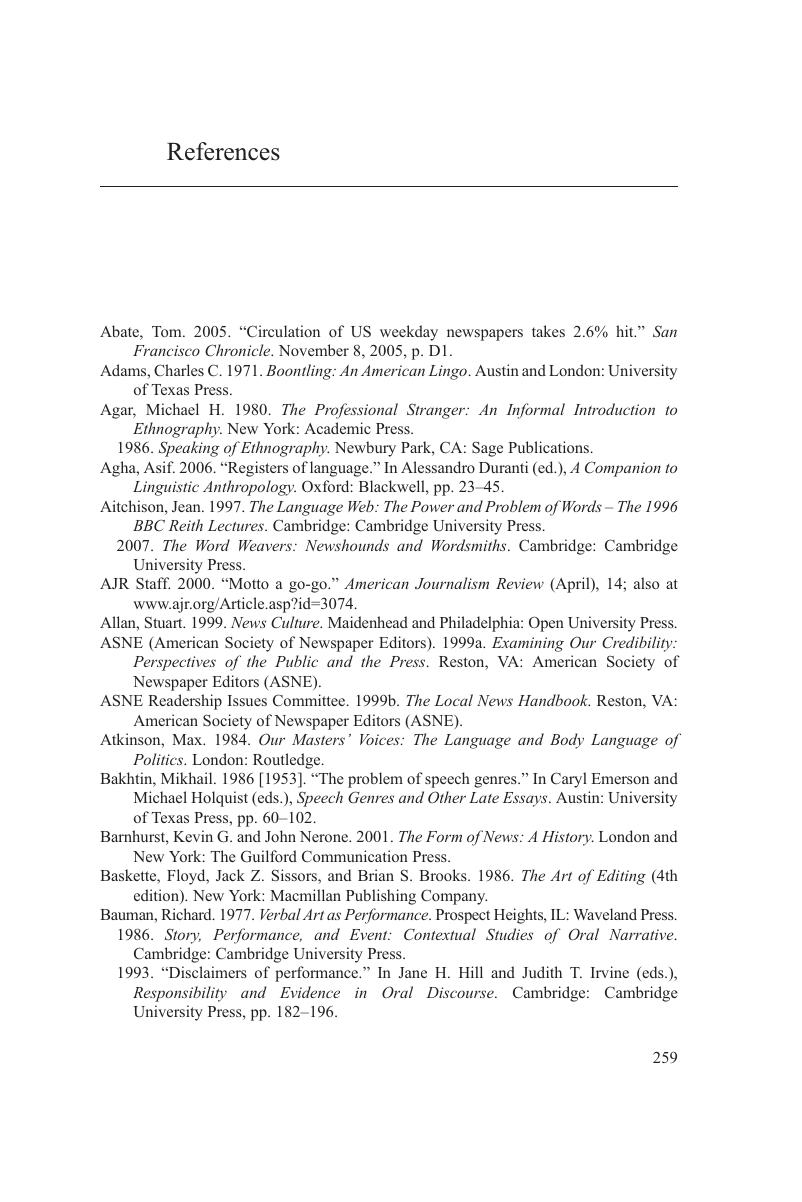Book contents
- Frontmatter
- Contents
- List of figures and tables
- Acknowledgements
- Introduction
- Part I The process and practice of everyday journalism
- Part II Conceptualizing the news
- Part III Constructing the story: texts and contexts
- Part IV Decoding the discourse
- Conclusion and key points
- Epilogue
- Appendices
- Glossary of news and linguistic terms
- References
- Index
- References
References
Published online by Cambridge University Press: 05 June 2012
- Frontmatter
- Contents
- List of figures and tables
- Acknowledgements
- Introduction
- Part I The process and practice of everyday journalism
- Part II Conceptualizing the news
- Part III Constructing the story: texts and contexts
- Part IV Decoding the discourse
- Conclusion and key points
- Epilogue
- Appendices
- Glossary of news and linguistic terms
- References
- Index
- References
Summary

- Type
- Chapter
- Information
- News TalkInvestigating the Language of Journalism, pp. 259 - 271Publisher: Cambridge University PressPrint publication year: 2010



